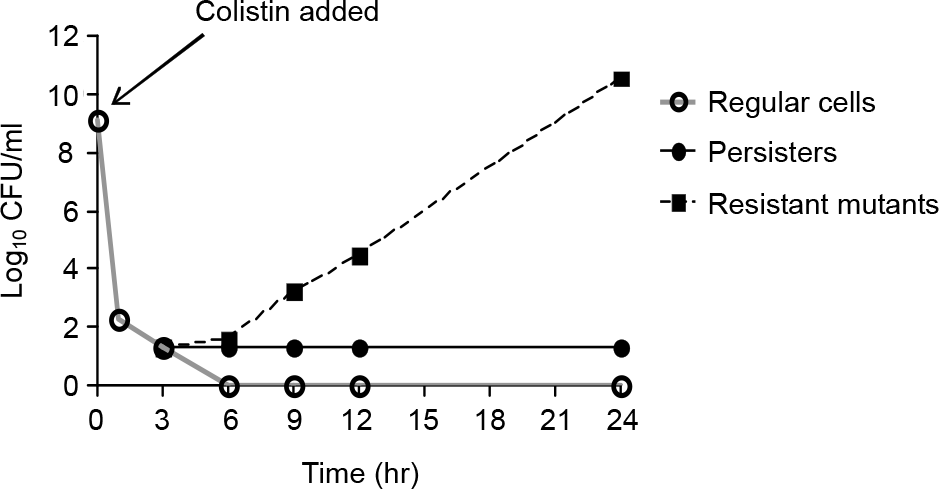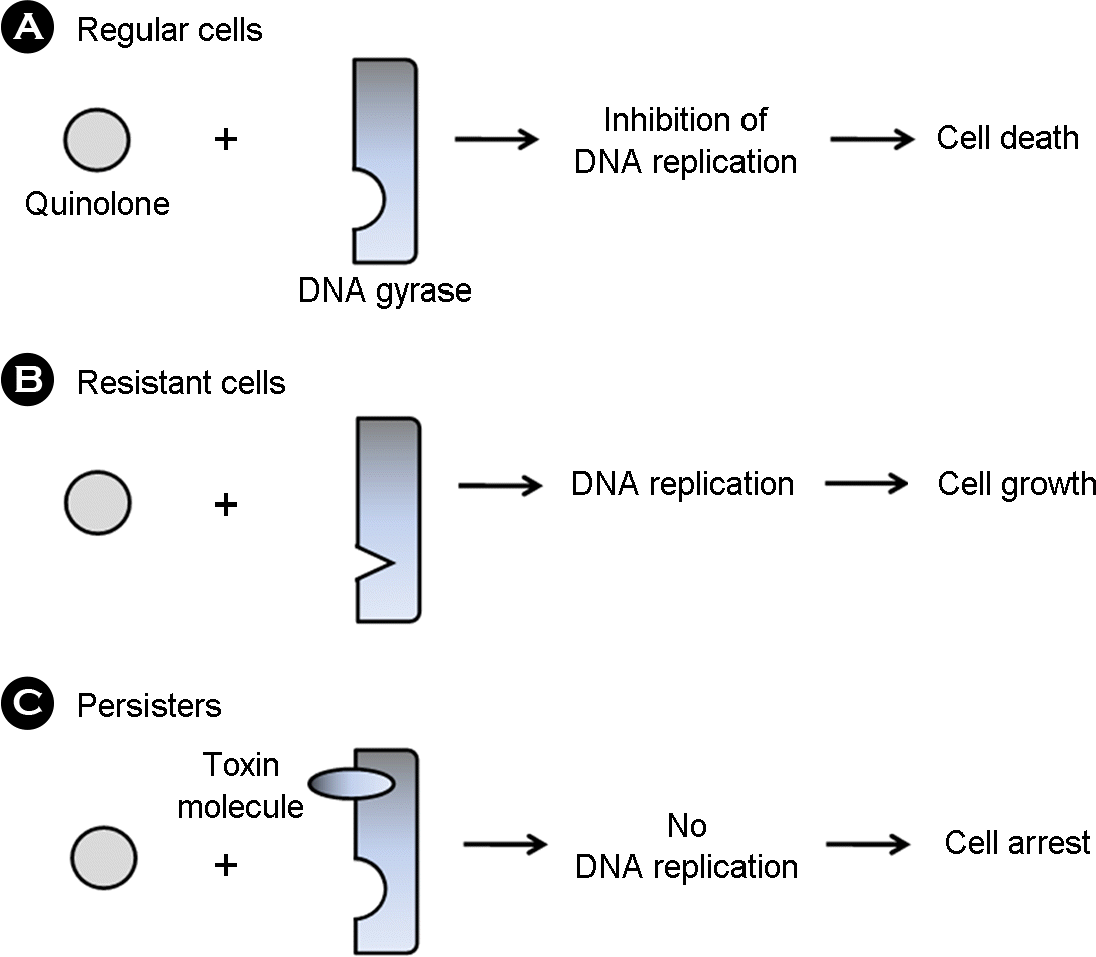Abstract
Persistence is dormant phenotypic variants of regular cells that are tolerant to antibiotics. The persistent cells did not acquire antibiotic resistance genetically, being produced in response to antibiotic stress. Because of dormant phenotypic variants due to little or no cell-wall synthesis, translation, or topoisomerase activity, persistent cells show antibiotic tolerance. Recently, such persistent cells have been reported in many bacterial pathogens and are known to play significant roles in clinical settings, particularly in chronic diseases such as cystic fibrosis. Therefore, development of anti-persister drug and appropriate antibiotic treatment are required to eliminate the persisters and to prevent the development of antibiotic resistance. Screening of genes related to persister formation would lead to new drugs to combat persisters during infection. By reviewing recent publications, we summarize phenomenon of survival and tolerance in persistent cells.
Go to : 
REFERENCES
1). Dawson CC, Intapa C, Jabra-Rizk MA. “persisters”: Survival at the cellular level. PLoS Pathog. 2011; 7:e1002121.

2). Bigger JW. The bactericidal action of penicillin on Staphylococcus pyogenes. Irish J Med Sci. 1944; 19:553–68.
3). Hobby GL, Meyer K, Chaffee E. Observations on the mechanism of action of penicillin. Exp Biol Med. 1942; 50:281–5.

4). Nataro JA, Blaser MJ, Cunningham-Rumdles S. Persistent Bacterial Infections. Washington D. C.: ASM press;2000. P.p. 453.
5). Gefen O, Balaban NQ. The importance of being persistent: heterogeneity of bacterial populations under antibiotic stress. FEMS Microbiol Rev. 2009; 33:704–17.

7). Keren I, Kaldalu N, Spoering A, Wang Y, Lewis K. Persister cells and tolerance to antimicrobials. FEMS Microbiol Lett. 2004; 230:13–8.

8). Moyed HS, Broderick SH. Molecular cloning and expression of HipA, a gene of Escherichia coli K-12 that affects frequency of persistence after inhibition of murein synthesis. J Bacteriol. 1986; 166:399–403.
9). Wolfson JS, Hooper DC, McHugh GL, Bozza MA, Swartz MN. Mutants of Escherichia coli K-12 exhibiting reduced killing by both quinolone and beta-lactam antimicrobial agents. Antimicrob Agents Chemother. 1990; 34:1938–43.
10). Lewis K. Multidrug tolerance of biofilms and persister cells. Curr Top Microbiol Immunol. 2008; 322:107–31.

11). Levy SB, Marshall B. Antibacterial resistance worldwide: causes, challenges and responses. Nat Med. 2004; 10:S122–9.

12). Smith EE, Buckley DG, Wu Z, Saenphimmachak C, Hoffman LR, D'Argenio DA, et al. Genetic adaptation by Pseudomonas aeruginosa to the airways of cystic fibrosis patients. Proc Natl Acad Sci U S A. 2006; 103:8487–92.
13). Ojha AK, Baughn AD, Sambandan D, Hsu T, Trivelli X, Guerardel Y, et al. Growth of Mycobacterium tuberculosis biofilms containing free mycolic acids and harbouring drug-tolerant bacteria. Mol Microbiol. 2008; 69:164–74.
14). Bigger JW. Treatment of Staphylococcal infections with penicillin. Lancet. 1944; 244:497–500.
Go to : 
 | Figure 1.
Formation of persistent cells (modified from Lewis. Ref. 6) in K. pneumoniae. Schematic killing curves of different responses to colistin in regular cells, persisters and resistant mutants. |
 | Figure 2.
Resistance versus tolerance to bactericial antibiotics (modified from Wolfson et al., Ref. 9). (A) The quinolone binds to the DNA gyrase altering its function, which causes cell death. (B) The DNA gyrase has been altered so that it fails to bind the quinolones and the cell grows. (C) A toxin molecule inhibits the function of DNA gyrase. This prevents the quinolone from corrupting its functions, resulting in tolerance. |




 PDF
PDF ePub
ePub Citation
Citation Print
Print


 XML Download
XML Download